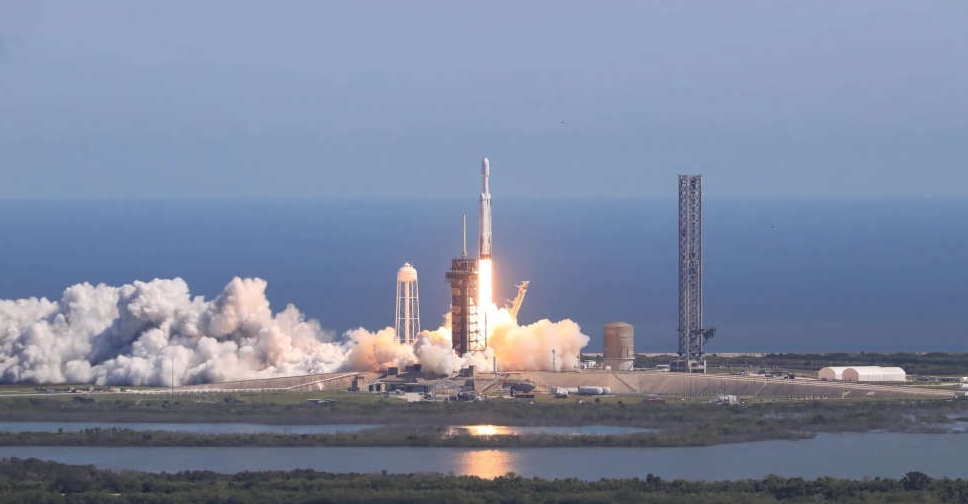
NASA launched a spacecraft from Florida on Monday on a mission to examine whether Jupiter's moon, Europa, has conditions suitable to support life, with a focus on the large subsurface ocean believed to be lurking beneath its thick outer shell of ice.
The US space agency's Europa Clipper spacecraft blasted off from the Kennedy Space Center in Cape Canaveral on a SpaceX Falcon Heavy rocket under sunny skies. The robotic solar-powered probe is due to enter orbit around Jupiter in 2030 after journeying about 2.9 billion km in 5.5 years. The launch had been planned for last week but was put off because of Hurricane Milton.
It is the largest spacecraft NASA has built for a planetary mission, at about 30.5 meters long and about 17.6 meters wide with its antennas and solar arrays fully deployed - bigger than a basketball court - while weighing approximately 6,000kg.
Even though Europa, the fourth-largest of Jupiter's 95 officially recognised moons, is just a quarter of Earth's diameter, its vast global ocean of salty liquid water may contain twice the water in Earth's oceans. Earth's oceans are thought to have been the birthplace for life on our planet.
Europa, whose diameter of roughly 3,100km is approximately 90 per cent that of our moon, has been viewed as a potential habitat for life beyond Earth in our solar system. Its icy shell is believed to be 15-25km thick, sitting atop an ocean 60-150km deep.
NASA Associate Administrator, Jim Free, told a prelaunch briefing on Sunday that Europa boasts one of the most promising environments for potential habitability in our solar system, beyond Earth, though he noted that this mission will not be a search for any actual living organisms.
"What we discover on Europa," Free said, "will have profound implications for the study of astrobiology and how we view our place in the universe."
"Scientists believe Europa has suitable conditions below its icy surface to support life. Its conditions are water, energy, chemistry and stability," said Sandra Connelly, deputy associate administrator of NASA's science mission directorate.
Among the mission objectives are measuring the internal ocean and the layer of ice above it, mapping the moon's surface composition, and hunting for plumes of water vapor that may be venting from Europa's icy crust. The plan is for Europa Clipper starting in 2031 to conduct 49 close flybys of Europa over a span of three years, coming as close as 25km (16 miles) to the moon's surface.



 Trump accepts Nobel medal from Venezuelan opposition leader Machado
Trump accepts Nobel medal from Venezuelan opposition leader Machado
 At least seven killed in Uganda violence, Museveni dominates election results
At least seven killed in Uganda violence, Museveni dominates election results
 Thailand halts multiple major construction projects after fatal accidents
Thailand halts multiple major construction projects after fatal accidents
 Bus crashes into building in South Korea, leaving 13 injured, Yonhap says
Bus crashes into building in South Korea, leaving 13 injured, Yonhap says
 South Korea's ex-president Yoon given 5-year jail term in first ruling over martial law
South Korea's ex-president Yoon given 5-year jail term in first ruling over martial law






